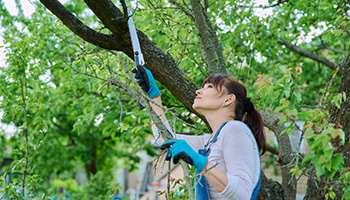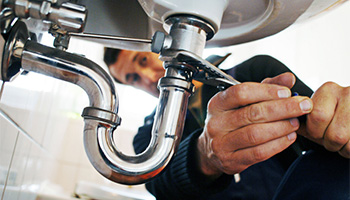top 10 best life insurance companies in usa | life insurance comparison | Android Scenes.
top 10 best life insurance companies in usa | life insurance comparison | Android Scenes
How to File a Business Property Insurance Claim and What to Expect
Facing a property loss at your business? Don’t let the added stress of filing an insurance claim overwhelm you. Whether it’s a sudden fire, a storm destroying your roof, or a vehicle crashing into your building, our comprehensive guide is the start of your business’s road to recovery. We’ll walk you through every step, from initial contact to final settlement, so you can focus on what matters most: rebuilding your business.
Before Disaster Strikes

Before a loss occurs, it’s important to know your policy coverage. Get familiar with what’s covered, what isn’t, and the dollar limit of your coverage. Your insurance advisor can guide you through the details of your policy. Next, become your own risk detective. Conduct a thorough assessment of your business property and processes to identify vulnerabilities. Proactive measures like installing security cameras or implementing a few safety measures can significantly reduce the likeliness of an insurance claim. Finally, be proactive with regularly updating and tracking your business’s assets. By doing so, you can prove what you have lost when filing a claim.
How to File a Commercial Property Insurance Claim in 6 Steps
Hopefully, you’ll never have to file a business insurance claim, but being prepared and knowing the steps can ensure a smooth and quick financial recovery. In fact, 40% of small businesses end up utilizing their commercial coverage, so understanding the process is crucial. Follow these steps to file a business insurance claim the right way:
1. Assess the Situation

Depending on the type of loss, you may need to call local authorities to ensure everyone’s safety in and around your business. While this is not a claim requirement, having a police report outlining what happened can help establish liability or validate the loss for your insurance company. If authorities are not present, carefully inspect your business area for safe entry. If it is unsafe, do not put yourself or others at risk. Once the premise is safe to enter, turn off the electricity, water, and gas, if possible. Next, meticulously document all damages with pictures and videos. Avoid discarding anything except perishable food until you meet with an insurance adjuster. When tossing out perishables, take pictures for documentation. Some business owner’s policies (BOP) cover perishable stock under their food spoilage coverage.
2. Determine How to File an Insurance Claim
Next, determine your insurance company’s preferred claim filing method. Many offer online options to file a claim, while some require you to speak with an adjuster over the phone. The claims process can involve downloading and mailing documents, uploading documents to their online portal, or using their specialized app. Knowing your provider’s process will make it easier and quicker to file a claim.
3. Gather Necessary Information and Report an Insurance Claim
Before calling your insurance company to report the loss, you’ll need to gather some key information your insurance adjuster will need such as:
- Contact information for you and others involved.
- Policy number
- Type of loss you’re submitting (property, auto, general liability, or workers’ compensation)
- Nature of the loss (fire, theft, water damage, etc.)
- Date and time of the incident
- A description of the loss or any injury (pictures and videos)
- Police or fire department reports
- Any witnesses and their contact information
- Inventory of damaged items including their receipts, invoices, or proof of purchase
- Financial records or tax filings if you’re claiming business interruption or loss of income
4. Secure Your Property
To prevent further damage, make temporary and inexpensive repairs, but hold off on permanent fixes. For example, board up broken windows or tarp a leaky roof. Keep receipts for materials you buy as they may be reimbursed. Avoid fixing any damage yourself as this can affect the claims process. Your adjuster may need to visually inspect the damage before repairs begin, and they’ll be responsible for documenting everything properly. Rely on your adjuster’s guidance for further securing your property. They can offer tips on protecting undamaged items, preventing further water or fire damage, and mitigating any potential safety hazards.
5. Work With Your Assigned Adjuster

Your assigned adjuster is your key to recovery. It’s important to stay in close contact and be open and honest about the damage and your situation. Transparency builds trust and can help expedite the process, getting your business back up on its feet as soon as possible. Keep organized by taking notes and documenting interactions. Expect a company field adjuster to inspect your property, at which point clarify repair responsibilities and obtain information on the next steps. Don’t be afraid to ask questions such as confirming repair estimates and the expected timeline for settlement. Provide any records that can prove the value of damaged equipment. If you need to claim business interruption or loss of income insurance, you will need to prove financial records to determine the amount of business lost.
6. Review Claim Settlement Offer
Your adjuster will review your policy and documents to determine coverage and eligibility. Once complete, your adjuster will present a settlement offer. Carefully review it and ask questions. Open communication and patience are key here. Remember, this claim process takes time, so be patient. If there is a disagreement about the claim settlement, ask for the specific policy language in question to determine if you and the insurance company interpret the policy the same. Don’t rush into the settlement. If the offer made by an insurance company does not meet your expectations, be prepared to negotiate within your policy’s limits to get a fair settlement. Once the settlement is agreed upon, you’ll receive payment and can proceed with repairs to your business property.
What Happens If Your Insurance Claim Is Denied?

If your claim is denied, first review the terms of your insurance coverage, and ask your adjuster for a clear written explanation outlining the specific reason for denial. This helps you understand their rationale and identify potential areas for appeal. Policies are very specific and will include specific clauses or exclusions that may have led to the denial. For example, business insurance policies include exclusions for flood damage, fraud, or late claim filing. Many insurance companies have internal appeals processes. Follow their procedures and submit your appeal in writing, addressing each point of denial and providing new evidence if available. If the internal appeal fails, you could file a complaint with your state’s insurance commissioner. They can investigate your claim and potentially intervene on your behalf. You may also consider consulting with an insurance lawyer or public adjuster. They can offer expert advice on the denial, review your policy, and advise on potential appeal strategies.
When Is It Worth It to File a Business Insurance Claim?
Several factors influence whether a business insurance claim is worth filing. Some of those factors include whether you are at fault, your policy coverage, the amount of the damage, and the type of incident. It’s worth filing a business insurance claim when the damage exceeds your deductible, while minor losses might be cheaper to handle yourself in the long run. Remember, claim history can affect future premiums, so consider the long-term impact before filing smaller claims. Insurers keep records of claims and share information across the industry. So, if you have a history of filing claims, your risk profile may increase potentially leading to higher premiums or even non-renewals by your insurance provider.
Is Your Business Truly Covered?
Don’t wait until disaster strikes to find out you have gaps in your coverage. Speak with one of our experienced Commercial Insurance Specialists today at (855) 919-4247 to review your policy. Our specialists can also provide you with a tailored commercial insurance quote to ensure you have the necessary coverage to protect your business.
The information in this article is obtained from various sources and offered for educational purposes only. Furthermore, it should not replace the advice of a qualified professional. The definitions, terms, and coverage in a given policy may differ from those suggested here. No warranty or appropriateness for a specific purpose is expressed or implied.
Buying Auto Insurance Online [Walmart and AutoInsurance.com review]
Buying auto insurance can be stressful for most Americans. Not because of the lack of information or choices of auto insurance, …
Eid Special Don’t Miss New Unlimited Funny Viral Trending Video 2023 Episode 206 By #BusyFunLtd
Hello Dear Viewers, This is a funny videos channel. We make funny videos in our village. Because We are live in village.
STATELIFE INSURANCE CORPORATION OF PAKISTAN offers Tayyab Takaful II Window Takaful Operation
State Life insurance corporation of Pakistan offers Tayyab Takaful as Window Takaful Operation for its participants. It is initially offering two plans. State Life …
HOW TO BUY FROM COPART AND THE INSURANCE AUTO AUCTIONS WITHOUT A DEALERS LICENSE! *PUBLIC CAN BUY*
Learn How I’ve Helped Hundreds Of People Buy, Inspect, Flip, & Profit Off Cars ?? https://www.whdacademy.com Decided To …
Find Affordable Health Insurance In Plano, Texas
Obamacare is too expensive for numerous Americans. If you’re one of them but still want Affordable Health Care Coverage, I can help.
Arthur and Melissa – a collection of funny videos about friendship
Arthur and Melissa – a collection of funny videos about friendship. Subscribe to the channel http://bit.ly/2HwUSzU Instagram …
7 Home Maintenance Projects to Avoid Expensive Repairs
Your home is one of life’s most significant investments, so following proper maintenance schedules is essential to avoid nightmare repairs. Although there are better ways to spend a weekend than doing chores, future you (and your wallet) will thank you for your time. According to a survey by Hippo, a home insurance provider, 65% of homeowners who experience repair issues admit that their problems could’ve been prevented with proactive maintenance. If you’d like to get ahead of your home maintenance projects but aren’t sure where to start, we put together this list of seven jobs you can start doing this weekend.
Home Maintenance Projects to Start This Weekend
- Inspect Your Roof
- Trim the Trees
- Service HVAC System
- Test Safety Devices
- Update Home Inventory
- Clean Dryer Vents
- Address Plumbing Issues
1. Inspecting Your Roof
Your home’s roof is its first line of defense from the elements and falling debris. When you allow your roof to deteriorate, you open the door to issues such as water damage, mold, poor insulation, and risk damaging your home’s overall structure. Like your home’s many systems, your roof requires proper inspections and maintenance to keep it in its best condition. Plus, staying ahead of any issues will help you avoid thousands of dollars in repairs.
What to do: The easiest way to stay on top of your roof’s health is to inspect it frequently, specifically after a harsh weather storm. You can visually examine your roof for loose or damaged shingles occasionally, but consider having it professionally inspected at least once every two years or sooner if you live in an area prone to extreme weather. Spring and summer months are typically the best time to get your roof inspected or repaired to avoid higher rates during the rain or snow season.
2. Don’t Forget to Trim the Trees

Old tree branches can greatly damage a home, especially during rough storms. On windy days, for example, tree branches can break off and fall onto your home’s structure or cause damage to its exterior due to constant friction. In drier climates, homeowners face an additional fire risk by having dry brush close to their property.
What to do: Before the start of storm season, give your home a walkaround to look for any tree branches that are making contact or hanging above your roof. Depending on the size and scope of the overhanging branches, hiring a professional may be safer than attempting a removal yourself. However, on the ground level, you don’t need a professional to remove any dry or dying vegetation near the side of your home that poses a fire risk. If you live in a dry climate, this is one of the home maintenance projects you don’t want to forget about.
3. Service Your Home’s HVAC Systems
Nothing is worse than trying to turn on your home’s AC during the heat of summer only to find out that it requires service. Furthermore, neglecting to perform simple maintenance projects, such as replacing your air filters, can affect the air quality in your home. This may seem simple, but ensuring your system runs smoothly without any clogs or hiccups is essential.
What to do: Clean or replace your home’s HVAC filters regularly. Most manufacturers recommend changing filters every three months, but that can vary depending on your location and whether you have pets. Besides changing your air filters, consider having your system professionally inspected or cleaned every year or two before peak seasons such as summer or winter. Clear any leaves or debris around your unit between inspections to prevent issues.
4. Test Smoke Alarms and Carbon Monoxide Detectors
Come winter, you’ll likely be using your home’s furnace or other heating elements to keep warm. If heating devices go bad, they can release toxic fumes like carbon monoxide or cause fires. You may also be like many others and have yet to change the batteries on your beeping fire alarm. Either way, keeping you and your family safe begins by ensuring your home’s safety devices function properly.
What to do: To keep smoke and carbon monoxide detectors working, test and replace their batteries regularly. If you have a fire extinguisher in your home, check its expiration date to confirm it is ready for use in an emergency. As an easy reminder, consider replacing batteries each time you reset your clocks for daylight savings.
5. Keep Your Home Inventory Updated

Disasters can strike at any time, so keeping your home inventory updated is important. If you don’t already have one, a home inventory is a way to record all your belongings inside your home. Having a home inventory list will prove extremely valuable during the claims process after a sudden disaster. Plus, having an updated home inventory will confirm you have the right amount of coverage for your personal belongings through your residential insurance.
What to do: If you have an ongoing home inventory list, consider making updates at least twice a year. That way, you will only spend a little bit of too much time adding new purchases in bulk. However, if you don’t have an inventory list, start today by doing one room at a time. Listing your possessions may seem daunting, but taking it slow can spread the project out over time. You can also utilize recording devices to help make the job easier.
6. Clean Out Dryer Vents
According to the National Fire Protection Association (NFPA), washing and drying machines cause an average of 15,970 fires annually, with 26% directly caused by dust, fiber, or lint. One of the easiest home maintenance projects is to clean dryer vents yearly to protect your home from a fire. Although many homeowners remember to clean out their lint filter between laundry loads, many more wait far longer to clean their exhaust vents, if at all.
What to do: To limit your fire risk, consider cleaning out your dryer vents 1-2 times a year. If your vent travels a short length or is on the ground level, you can do this job yourself. However, hiring a professional may be the easier option if your vents travel a great distance across various floors. Regardless of which option you choose, clean your vents regularly and be sure to touch every nook and cranny for the best results.
7. Don’t Forget About Your Plumbing

Checking for signs of water damage or leaks throughout your home is important, no matter the time of year. Simple leaks can become costly problems if left alone for extended periods. As water damage spreads, it can also lead to mold and structural damage concerns. Do your toilets run constantly? Do some of your sinks run or drain slowly? Are there any visible signs of damage on any exposed pipes or supply hoses? These are the questions you should ask yourself when searching for water-related issues.
Aside from your plumbing, remember to service your water heater as recommended by its manufacturer. Depending on your heater, you may need to adjust the pressure valve or flush it to keep it running efficiently. Always refer to your owner’s manual for a detailed understanding of how often you should service your water heater.
What to do: Visually inspect for signs in your bathroom, sink areas, showers, and washing room for water damage or leaks. If you notice anything concerning, quickly rectify the issue or contact a professional. If you have a traditional water heater, follow manual instructions to flush it out to remove sediment buildup.
Keep Your Home Prepared for the Unexpected
Having the proper home insurance is crucial whether you recently moved in or not. A homeowners insurance policy doesn’t just cover your home’s physical structure, it also covers your belongings and provides liability protection in the case of an accident. However, just like with any other insurance type, reviewing coverage regularly is important to ensure you are properly covered.
At AIS, we have over 55 years of experience helping our customers navigate the insurance marketplace. Our specialists can help you find and purchase reliable homeowners insurance wherever you live. To learn more about the coverage available, contact us at (888) 772-4247 or start a quote online.
The information in this article is obtained from various sources and is offered for educational purposes. Furthermore, it should not replace manuals or instructions provided by the manufacturer or the advice of a qualified professional. No warranty or appropriateness for a specific purpose is expressed or implied.
How To Estimate Car Insurance Before Buying A Car
There are many factors that can influence insurance costs: 1. Car make, model and year of manufacture 2. Your driving record 3.
EPISODE #2 | Innovations in Vital Care Webinar Series
The Changing Emergency Department | Presented by Dr. Alim Pardhan Dr. Alim Pardhan is an Emergency Department Physician and Site Chief of the Hamilton …
The Baddest Pro Mod in Drag Racing – Craig Sullivan
The Baddest Pro Mod in Drag Racing – Craig Sullivan (Video via Straight Line Media/Kyle Christ) Follow us on Instagram: @DoorSlammersDragRacing Follow …
Katotohanan ng Insurance… Mag ingat!
Thanks for watching “Katotohanan ng Insurance… Mag ingat!” Nasayang na ba ang pera mo ng dahil sa insurance? Ang sabi …
Auto Insurance Quiz
Auto Insurance Quiz from the Insurance Information Institute. For more information about insurance, go to the I.I.I. Web site at …
Sidecar Health – How we compare with traditional plans
Watch how Sidecar Health compares with traditional health insurance plans. Our plans are affordable, personalized, transparent, and simple to use.

